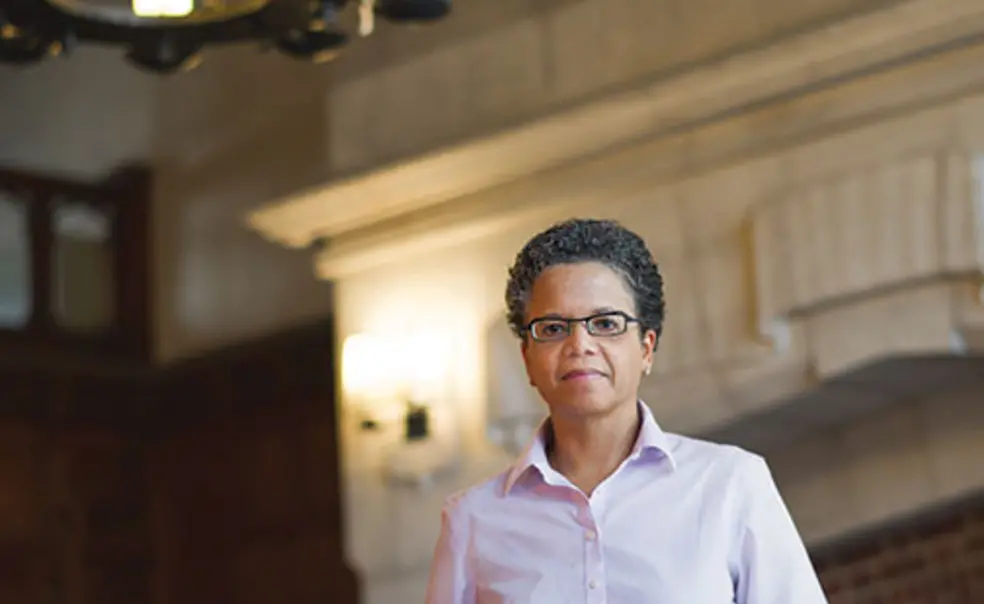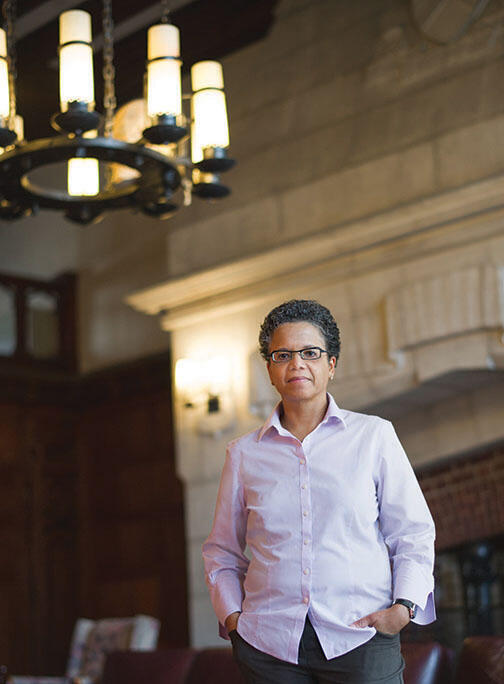Religion: Spiritual Awakenings
Little-known religious movements gave a fresh identity to African-Americans
In the early 20th century, life for many African-Americans was undergoing significant changes. Millions migrated to the North to find jobs and struggled to adjust to life in places that were more ethnically and religiously diverse than their places of birth. Some of them found comfort in new religious movements that were emerging in cities such as Detroit and Chicago. Religion professor Judith Weisenfeld *92 is studying these little-known religious movements, which she believes had an outsized impact on racial identity at a time when many African-Americans were questioning their longstanding commitment to Protestant religious traditions.
The movements that sprang up embraced an alternative vision of identity — both religious and racial — that many African-Americans found appealing, Weisenfeld says. The Peace Mission movement, for example, which was led by a charismatic figure named Father Divine, preached against the use of racial categories, which he saw as divisive. While Father Divine attracted as many as 10,000 followers by the 1930s, other groups — such as the Moorish Science Temple of America and the Ethiopian Hebrews — numbered in the hundreds or low thousands.
By drawing those who once had been members of the Protestant faith, the groups forced black Christian churches “to refine an argument” about why African-Americans should share the same faith as “the people who oppressed them,” Weisenfeld says. “The power of these movements was to undermine the sense of inevitability of black Protestantism.” Weisenfeld’s research will be gathered in a book titled Apostles of Race: Religion and Black Racial Identity in the Urban North, 1920–1950.
The movements borrowed from many religions, including Buddhism, Judaism, and Islam. They had frequent contact with mainstream black churches, which regarded them as sects or cults. One group — the Nation of Islam — grew in size and influence in the 1950s and 1960s. Black newspapers were a critical way for the groups to spread their message, Weisenfeld says: “Wherever you were, if you subscribed to one of these newspapers, even in the rural South, you learned about these new religious movements.”
Weisenfeld’s breakthrough discovery came at ancestry.com, where she found images of World War II-era draft cards on which men identified their race as “Black Hebrew” or “Moorish,” indicating how affiliations with these religious groups altered some individuals’ sense of racial identity. The men used such identifiers because it connected them with historical traditions and gave them a sense of importance that the word “Negro” — which was associated with years of slavery — did not, Weisenfeld points out. Researching census and military records, among other sources, she found additional examples of individuals who sought to assert an alternate identifier even when government representatives pushed back and argued that they were in fact “Negro.”
Some of these religious groups still are around today. Their legacy lives on, Weisenfeld says, because they “opened up the possibility for African-Americans to consider non-Protestant traditions.”













No responses yet